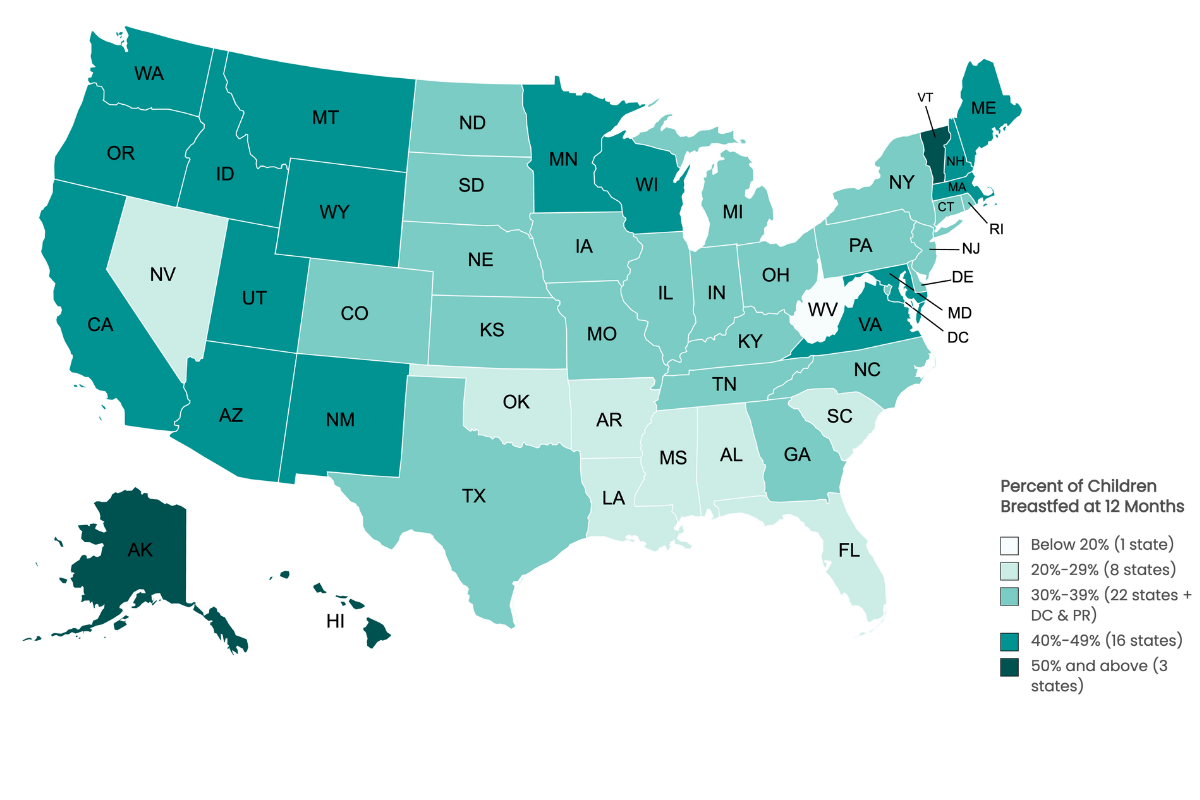
Location Matters: Breastfeeding Rates across the U.S.
According to a 2018 UNICEF report, around 95% of babies globally receive breastmilk. That same report shows the rate in the United States to be 74% (the CDC shared a rate of 83% more recently) - putting the U.S. significantly below other high-income countries like Canada (89%), Chile (95%), and Sweden (98%). Disparities in breastfeeding rates can be attributed to how each country handles maternity leave, funds breastfeeding support programs, implements the baby-friendly hospital initiative, and regulates the marketing of formula.
Given the minimal federal involvement in many of these areas, major disparities exist between U.S. states, too. Check out the map below to see how each state is performing at the one-year mark. You'll find one state (West Virginia) reporting less than 20% of children still being breastfed at 12 months and only three states are maintaining a rate above 50% at 12 months. As a reminder, the American Academy of Pediatrics, along with WHO and UNICEF, recommend children be breastfed for up to two years and beyond. While the numbers aren't in yet, it's safe to say the map would be much less colorful when updated to the two-year mark.
Looking for ways to help your state increase breastfeeding rates? Educating yourself on the struggles nursing moms face is a great start. Advocating for more pro-breastfeeding public policy and support can help level the playing field. You can also help create more supportive workplace environments by using Boobbatical resources to better equip managers and HR or engage your employer.
Percent of children breastfed at 12 months of age

Curious to learn more about your state? Visit the CDC website for breastfeeding initiation rates and maps by county.